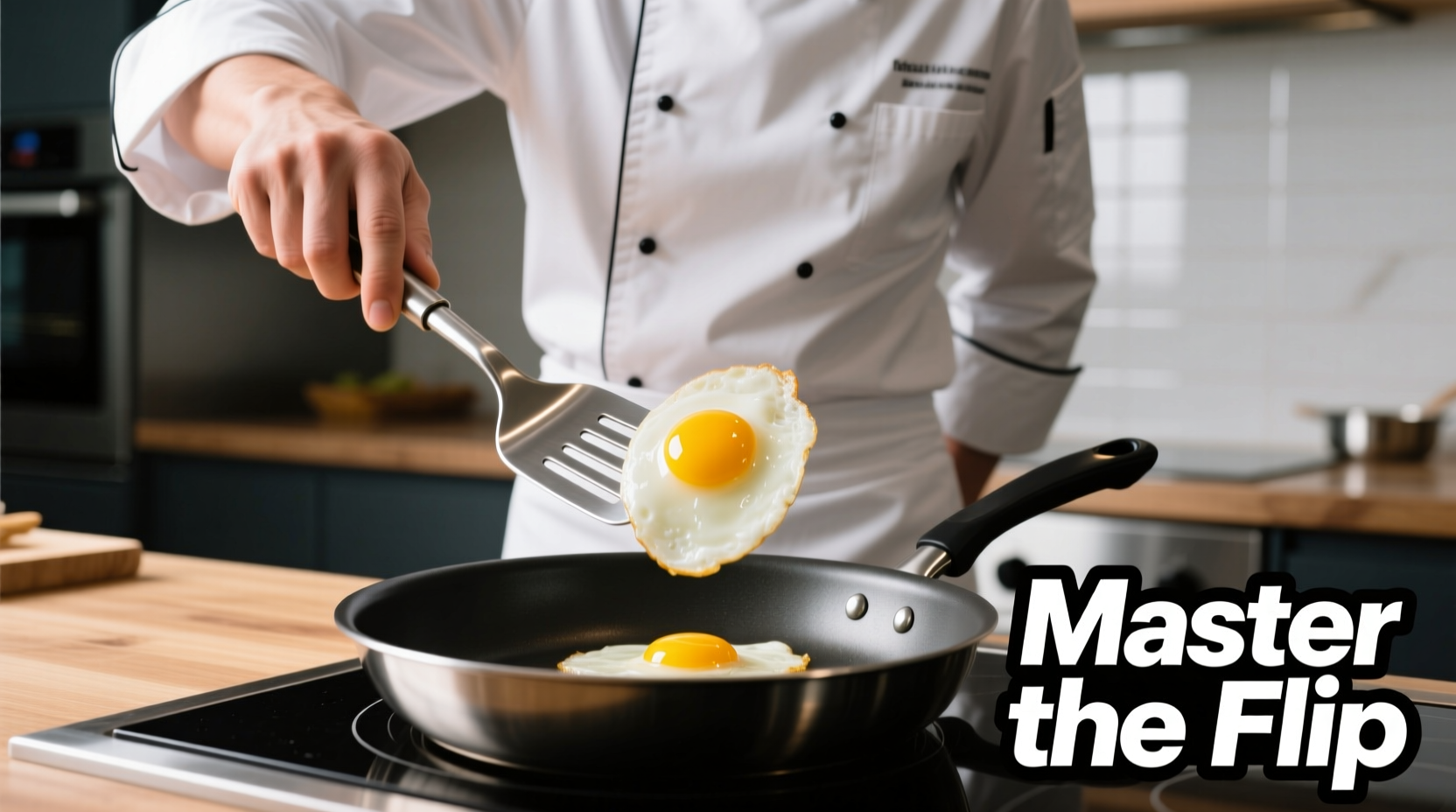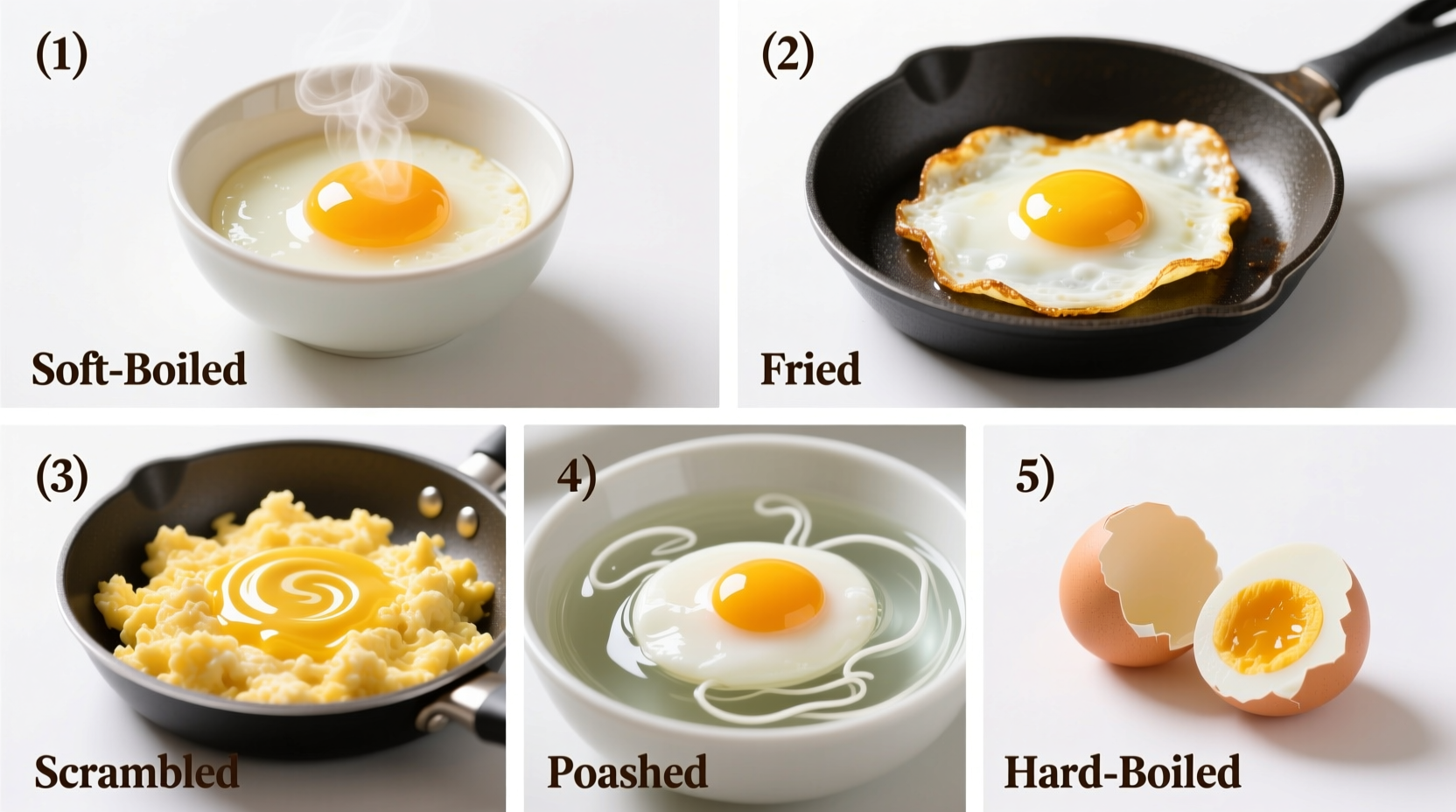Mastering egg preparation unlocks endless culinary possibilities. Whether you're a beginner cook or seasoned chef, understanding these fundamental techniques transforms this humble ingredient into restaurant-quality dishes. This comprehensive guide details every major cooking method with precise timing, equipment requirements, and visual indicators for perfect results every time.
The Complete Egg Cooking Reference
Eggs represent one of the most versatile ingredients in culinary history. Their unique protein structure responds differently to various cooking methods, creating dramatically different textures from the same basic ingredient. According to culinary research from the America's Test Kitchen, understanding the science behind egg coagulation (proteins setting between 144-158°F) is key to mastering all preparation techniques.
| Cooking Method | Prep Time | Cook Time | Temperature | Yolk Texture |
|---|---|---|---|---|
| Soft Boiled | 1 min | 4-6 min | 212°F | Runny |
| Hard Boiled | 1 min | 9-12 min | 212°F | Firm |
| Sunny-Side Up | 2 min | 2-3 min | 275-325°F | Runny |
| Over Easy | 2 min | 3-4 min | 275-325°F | Runny |
| Scrambled | 2 min | 3-5 min | 250-300°F | Creamy |
Essential Egg Cooking Techniques
Boiling Methods
Boiling represents one of the oldest egg preparation techniques, with archaeological evidence showing boiled eggs consumed as early as 1400 BCE. The USDA Food Safety and Inspection Service recommends starting eggs in cold water for more even cooking and reduced cracking. For soft-boiled eggs with runny yolks, cook for 4-6 minutes after water reaches a gentle boil. Hard-boiled eggs require 9-12 minutes for fully set yolks. Shocking boiled eggs in ice water stops cooking and makes peeling easier.
Frying Variations
Fried eggs offer four primary styles based on flipping and doneness:
- Sunny-side up: Cooked without flipping, yolk remains completely liquid
- Over easy: Flipped once, yolk remains runny
- Over medium: Flipped with yolk partially set
- Over hard: Flipped until yolk is completely firm
Professional chefs recommend using medium-low heat and clarified butter for optimal browning without rubbery textures.

Advanced Preparation Methods
Beyond basic boiling and frying, several sophisticated techniques showcase eggs' versatility:
Shirred/Baked Eggs
Baked in ramekins at 350°F until whites set but yolks remain liquid (12-15 minutes). This French technique, documented in Escoffier's Le Guide Culinaire, creates perfectly centered eggs ideal for brunch presentations.
Steam-Poached Eggs
Popular in Chinese cuisine, these cook in 2-3 minutes using gentle steam, producing custard-like textures. According to research published in the British Journal of Nutrition, steaming preserves more nutrients than boiling.
Frittatas and Omelets
These egg-based dishes incorporate additional ingredients. Traditional French omelets use high heat and constant stirring for tender curds, while frittatas bake slowly for even doneness throughout. The key difference lies in technique: omelets fold around fillings, while frittatas serve open-faced.
Practical Cooking Guidance
Success with egg cooking depends on precise temperature control and timing. America's Test Kitchen research shows that scrambled eggs reach optimal creaminess at 150°F - just below the temperature where they become rubbery (158°F). For poached eggs, adding vinegar to simmering water (1 tablespoon per quart) helps whites coagulate faster, preventing feathering.
Equipment matters significantly. Non-stick or well-seasoned cast iron pans prevent sticking with fried eggs. For boiled eggs, older eggs peel more easily than fresh ones due to higher pH levels. When making omelets, a 6-8 inch pan provides ideal surface area for proper folding.
Choosing the Right Method
Select your cooking technique based on these factors:
- Time available: Scrambled eggs cook fastest (5 minutes), while sous vide eggs require 1+ hours
- Skill level: Boiling and scrambling are most beginner-friendly
- Meal context: Poached for Eggs Benedict, fried for breakfast plates, hard-boiled for salads
- Dietary needs: Poached and boiled retain most nutrients without added fats
Professional chefs often combine methods - starting eggs on stove then finishing in oven for perfect frittatas, or using steam after initial frying for cloud-like scrambled eggs. The versatility of eggs means you can adapt these techniques to create thousands of variations while mastering just a dozen fundamental methods.
How many basic egg cooking methods exist?
There are approximately 12 primary egg cooking methods including boiling, frying variations, scrambling, poaching, baking, steaming, and specialized techniques like making frittatas and soufflés. Each method produces distinct textures and requires specific timing and temperature control.
What's the difference between over easy and over medium eggs?
Over easy eggs are flipped once with the yolk remaining completely runny, while over medium eggs receive slightly longer cooking after flipping, resulting in a partially set yolk with a soft, jam-like center. The difference is approximately 30-45 seconds of additional cooking time.
How long should I boil eggs for perfect hard-boiled results?
For perfect hard-boiled eggs, start with room temperature eggs in cold water, bring to a gentle boil, then cook for exactly 9-12 minutes. Immediately transfer to an ice bath for 15 minutes to stop cooking and make peeling easier. Older eggs (1-2 weeks) peel more cleanly than very fresh eggs.
Why do my scrambled eggs turn rubbery?
Scrambled eggs become rubbery when cooked above 158°F, causing proteins to tighten excessively. To prevent this, cook over medium-low heat, remove from heat just before fully set (carrying over will finish cooking), and consider adding a splash of milk or cream which raises the coagulation temperature slightly.
Which egg cooking method preserves the most nutrients?
Shorter cooking methods at lower temperatures preserve the most nutrients. Poaching and soft-boiling retain the highest nutrient levels since they use minimal heat exposure without added fats. According to research in the British Journal of Nutrition, these methods preserve up to 90% of eggs' vitamin D content compared to 60-70% in fried or hard-boiled preparations.











 浙公网安备
33010002000092号
浙公网安备
33010002000092号 浙B2-20120091-4
浙B2-20120091-4